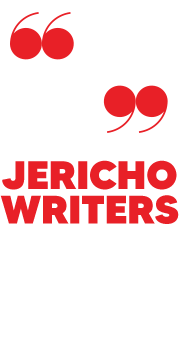Creating an agent submission pack for fiction is reasonably simple, with clear guidelines. But nonfiction book proposals can be a little trickier.
In this article, I’ll show you how to write your own nonfiction book proposal that will work for a literary agent and a publisher. I’ll provide a sample proposal and give you examples of what to do (and what not to do) as you put your proposal together.
We’ll start off by considering what nonfiction publishers actually want from you. Their wants drive what you need to give them. In effect, we can just build a template book proposal where all you have to do is fill in the blanks.
Easy, right?
Write A Nonfiction Book Proposal In 4 Steps:
- Prepare a query letter – include a book overview, target audience, USP, writing CV, and motivation for writing.
- Add a bio – including a professional resume and platform, i.e. social media, blog, mailing list etc.
- And a market overview.
- You’ll also need to send sample chapters, book outline, and introduction.
What Is A Book Proposal?
And what do publishers want from it?
A book proposal is a pitch to a publisher. Quite likely, you reach that publisher via a literary agent, so the first pair of eyes on your work will be those of an agent, but either way, your final target is a publisher.
So, when you’re writing a nonfiction book proposal you need to think about what makes your book stand out.
Your pitch offers the traditional publisher the opportunity to acquire a nonfiction book, authored by you, on the subject set out in your proposal.
In exchange, the publisher will (assuming they’re keen to proceed):
- agree to publish your work
- pay you an advance
- pay you royalties if and when your advance is ‘earned out’ by book sales.
You will receive a slice of that advance payment once a contract is agreed. The remainder of the advance will be paid out, typically, (a) on acceptance of a complete manuscript, (b) on hardback publication, and (c) on paperback publication, if you have one. If your nonfiction book only comes out in one edition, the last two chunks will come as one.
Clearly, publishers make their money by acquiring books with commercial potential, so it makes sense to pitch them with interesting book ideas.

Here are some things you should cover in your proposal:
Subject
What do you want to write about?
Audience
Why do you think anyone would be interested?
Competition
What other titles are there in your area? Or, to be rather more accurate: what titles in your area have made money? That’s important, because those comparable books will form an important part of any acquiring editor’s in-house pitch at the time of acquisition.
Angle
How does your book differ from everything else that’s out there? Why does the particular angle you bring feel urgent, necessary and compelling?
Authority
What qualifies you to write on this topic? Why should anyone listen to you?
Platform
What platform do you have to generate publicity or visibility for your book? Answers might include large followings on social media, a regular broadcast presence, or a position as a columnist in a major national newspaper or magazine.
Title
It’s almost possible to overlook the title, just because it’s so damn obvious. But a great title counts for a huge amount. A good title should do two things. It should communicate what the book is about, but it should also do that in a sexy, edgy, novel, exciting way.
A book called A Journey of Self-Discovery would be unpublishably bad. A book called Eat, Pray, Love could just be an international hit. Or just think how many extra sales Yuvral Noah Harari achieved by calling his first book simply Sapiens. That’s a huge subject with an utterly enticing one-word hook. Perfect! Do likewise.
Intended Word Count
Honestly? You won’t know this until you’ve written your book. But say something. 70-90,000 words would be about right for most memoirs. A 100,000-word book would be about 350 pages in print, so think roughly how long you want your finished book to feel.
Anything over 120,000 words will have a slightly epic quality for the reader (and be more expensive for the publisher to produce), so only aim for high word counts if the subject matter is really worth it. (The American Civil War: yes. One somewhat interesting murder in Minnesota: no.)
All that is to look at your proposal from a publisher’s point of view, but they have to think about things from a readers’ perspective as well. So they will also want to know:
The Pitch To The Reader
How would you go about pitching the book to a reader, rather than to a publisher? Does that pitch feel compelling, or a bit flat?
Writing Skills
Can you write decently? What is the actual experience of reading your book going to be like?
Detailed Subject Matter
What is your book actually about? It’s all very well to say (for example), that your book will be a history of Rome. And good – that’s clearly the kind of subject matter for which there is a perennial market. But what will the actual, detailed, chapter by chapter content be?
You need to be able to outline your content and do so in a way that will make sense to someone who has little prior knowledge of your topic.
These questions have to be answered by the proposal you offer to the publisher/literary agent. In effect, your proposal will simply go through these questions one at a time and answer them in a way that will give the strongest possible reassurance to the people holding the chequebook.

What Should Be In Your Book Proposal:
A Template
A nonfiction book proposal template might run roughly as follows.
(Why only “roughly”? Well, several reasons, really. First, non-fiction is a very varied field, and the basic template will need to bend a bit depending on what’s on offer. Secondly, there’s no required industry-standard format, the way there is with screenplays. That gives you some wiggle room. And third, you may be stronger in some areas and weaker in others. There’s nothing wrong with constructing your proposal so as to make the most of your assets!)
Right. So things may vary, but a good place to start is as follows:
1. A Covering Letter (Or Query Letter)
Your covering letter will deal with the following elements:
- Purpose: Explain why you’re writing in the first place.
Example: “Dear Annie Agent, I am writing to seek representation for the attached book proposal, A Puzzle in String” - Subject matter: Explain what the book is about.
Example: “My book is a popular science book that explains string theory in terms that laypeople can understand [etc].” - Audience: Explain who you think will be interested.
Example: “The book will appeal to anyone interested in understanding the most fundamental aspects of the universe we live in. It will appeal to broadly the same people who bought Steven Hawking’s Brief History of Time . . . etc.” - Angle: The world mostly doesn’t need more books. So why is yours the one that readers will want to pick up, given the vast range of options they already have?
Example: “My book differs from the other books on the market in that it …” - Personal background: Explain (in brief) who you are.
Example: “I am a Professor of Physics at XYZ University . . .” - (Optionally) Motivation: In some cases, it can help to explain why you felt driven to write this book.
Example: If you were writing a book on silence, you might want to mention (say) that you had spent six months living, in silence, as a hermit. - Documents: Explain what documents you are presenting.
Example: “I attach the following documents . . .”
A good letter will run to no more than two pages. (If you were a novelist, we’d suggest your letter run to no more than a single page, but the rules are a bit different for nonfiction authors. You have a little more room.)

2. A Professional Author Bio
Your self-description needs to cover (usually) two elements:
- Here’s where you set out something like a professional resume. Even here, bear in mind your audience. So let’s say you are a professor of physics. Since you’re addressing laypeople, instead of listing your papers in detail, you can just say, “I have authored more than 70 scientific papers . . .”
- You should also set out your platform, if you have one. That platform will include any way you have of reaching your target audience: social media, broadcasting, journalism, a blog post, a mailing list – anything. Do note that publishers have pretty high standards here. You’d need several hundred thousand Twitter followers, for instance, to move a publisher’s stony heart.
Typically, you will either bring significant authority (“I’m a physics prof”) or a significant platform (“I have over 2,000,000 followers on Instagram”). It’s pretty rare that an author brings both, but if you have both – brag.
And what happens if you have neither platform nor authority?
Well, authority and platform are great, but if anyone tells you they’re essential – well, they’re wrong. Great writing plus a great idea will work fine every time as they’re the most important things.
If you have neither platform nor authority, your bio doesn’t need to go into any great depth.
3. A Market Overview
A marketing plan is also crucial. You’ll need to provide:
- A swift definition of your market as you see it. Be as precise as possible here. Don’t tell agents/publishers that your book will appeal to “all intelligent book buyers”. Define your audience as precisely as you can.
Example: “This is a book of popular physics, part of the broader popular science market. Because the book lies at the harder end of the science market, it’s likely to appeal to readers with past enjoyment of quantum physics, astronomy…” - Measures of engaged audience size: You want to give publishers some kind of metrics for the possible target audience – but be sober here, not expansive. If you are writing a book about Ireland, for example, don’t say, “The worldwide population of Irish, Irish-American, and other Irish descended people is estimated at…” Yes, you may arrive at a large number that way, but it will be a meaningless number. Much better to say something like, “Nuala FitzShamrock’s history of the Irish Famine spent Y weeks on the NYT bestseller list.” It’s quite hard to get useful measures of engaged audience size, but you’re better off giving a few hard stats rather than a larger number of fluffier ones.
- Offer an overview of major recent titles plus, if you want, some older classics – but publishers will certainly be focusing primarily on titles of the last 2-3 years. Don’t just list out the titles themselves, but include details of author, publisher, publication date, ISBN, page count, formats (eg: hardback, paperback, e-book, audio), and price points for each. These things matter a lot to a nonfiction publisher because they’ll instantly be able to tell what kind of market currently exists for these books. (They can also check, which you can’t, what the sales history for these titles are.) So if the only current publishers for your subject are academic publishers with books priced at $100+, it’s unlikely that a trade publisher will think that a mainstream market exists for your book. You’ll want to provide data on at least 5 comparable titles, but 10 would be a better number to aim for.
- Provide any data you have on sales / prizes won / publicity achieved for your comparative titles. This can be hard, by the way, because this is an area where publishers will have paid-for sources of data that you don’t have. All the same, it’s worth making some effort here, as you can show yourself to be a professional, market-aware author – something publishers love to see! The easiest way to guesstimate approximate sales is by looking at Amazon sales ranking . . . just be aware that those rankings are volatile, so they can be an unreliable guide.
Example: “String Theory for Idiots, by Prof Quentin Quark (Pub: Penguin Random House, 2018) is currently ranked at #1,800 in Amazon.com’s overall bestseller list. Format, pricing and ISBN details are: …)” - Angle: Provide a brief summary of how your book differs from the competition. What makes yours special? Why does the market need your book?
This last point is the crucial one.
Sometimes, you might come across an idea that hasn’t been done before. In that case, say so.
You have to bring something new to the market you are writing for. It is the newness and urgency of that idea which will go a long way to determine whether your nonfiction book proposal succeeds in generating offers or not.

4. Sample Material
So far, the material we’re offering to the publisher includes stuff about the book (your query letter, that market overview) and about you (the bio.)
But we do also need to give publishers a good taste of the work itself, which means you will also need to supply:
A. Sample Chapters
You’ll need to include sample chapters from the book itself, to give the agent and publisher an idea of whether you can actually write. Can you write engagingly for a broad audience? This is your chance to prove it.
If your book is narrative nonfiction, you will need to include the first three chapters from the book, because the narrative won’t make sense any other way.
For subject-led non-fiction, the chapters can be non-contiguous.
B. A Synopsis
You need to give a detailed synopsis of the complete book. If you’re writing narrative nonfiction, that can take the form of a regular synopsis, but probably longer than what you’d offer for fiction. Aim for about 2,000 words, if you’re not sure – though again, these things are variable.
In some cases, you’ll find that narrative nonfiction – such as memoirs or travel books – simply demand to be treated like the novels they resemble. And that will probably mean that you need to write the whole damn book and that a proposal will simply not be enough. Sorry!
(Though you can always get a proposal over to an agent. At the very least, a good proposal will start a useful conversation with an interested agent.)
So what about the more subject-led non-fiction?
The good news here is that you may be able to get away with relatively little.
If you’re writing, let’s say, Paleo Science: What’s fact, what’s myth, and what matters to you, a detailed skeleton outline of a few pages should be fine. Don’t go wild.
C. An Introduction
As well as a sample chapter or two and a detailed outline, I strongly favour including the introduction that you intend to appear in the final finished book. That intro should act as a kind of manifesto for the book. It needs to proclaim, in effect, “Here’s why this topic is so important and so urgent that you have to fish $20 from your pocket right now and buy this book.”
The manifesto is partly a communication of facts. (For example: “If sea levels continue to rise at their current rates, 47% of lower Manhattan will be underwater by 2029.”) But it’s also partly a process of seduction. You are seeking to entice the reader into seeing the world your way.
That’s where strong writing comes into its own – and indeed, this will probably be the most important chapter you’ll write, as it’ll be the most influential in that buy/don’t-buy decision.
Quite likely, you’ll find that actually writing that intro will bring your own project into greater focus, even for you. You’ll realise exactly what it is about your project that drives you so much. Communicate that passion to the reader, and you are onto a winner.
What Not To Do In Your Nonfiction Book Proposal
When you’re including anecdotes in your nonfiction proposal, it’s important that you add some human colour to it, rather than just offering a piece of information in an uninteresting manner.
In particular, if your book is narrative non-fiction, you want the reader’s response to be rather as it would be at the start of a novel. Why are we here? What’s going to happen next?
It’s those questions that compel attention. It’s that human anecdote which seduces the reader into the author’s project, and the author’s passion.
If you can get your actual writing to strike the right seductive tone, you will succeed. Readers will read your book for pleasure and interest above all else.
Want More Help With Your Book Proposal?
Why not try an agent submission pack review, or our video course on how to get published. Or, take a look at our range of editorial services here.
Frequently Asked Questions
How Long Is A Nonfiction Book Proposal?
The average length of a nonfiction book proposal is roughly around 10-25 pages. This varies greatly, depending on the topic, how thorough your proposal is, and how many sample pages of your writing you include. Specific literary agents and publishers may also have their own requirements for the lengths of the book proposals they receive.
What Is The Format For A Book Proposal?
The format of a book proposal may vary slightly, though most of them include: a query letter, a professional author bio, a market overview, and sample material (which includes a synopsis, sample chapters, and the introduction to your book).
How Do You Write A Pitch For A Nonfiction Book?
A pitch for a nonfiction book tends to be one or two sentences in length, and will reference the setting, subject, story, and unique selling point. Pitches summarise the key points of a book in a way which is clear and engaging.
How Do You Write A Synopsis For A Nonfiction Book Proposal?
The synopsis for a nonfiction book proposal should have a clear beginning, middle, and end; reflect the tone of your writing and the genre of your book; be engaging; reveal the key sections of your book (including any unexpected twists or spoilers); and be objective. They tend to be around 2,000 words long, though if you’re writing subject-led nonfiction it can be briefer and around a few pages long.
Jericho Writers is a global membership group for writers, providing everything you need to get published. Keep up with our news, membership offers, and updates by signing up to our newsletter. For more writing articles, take a look at our blog page.











